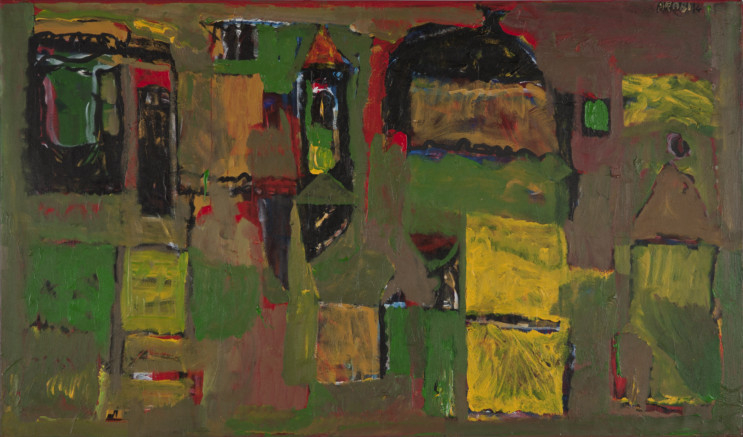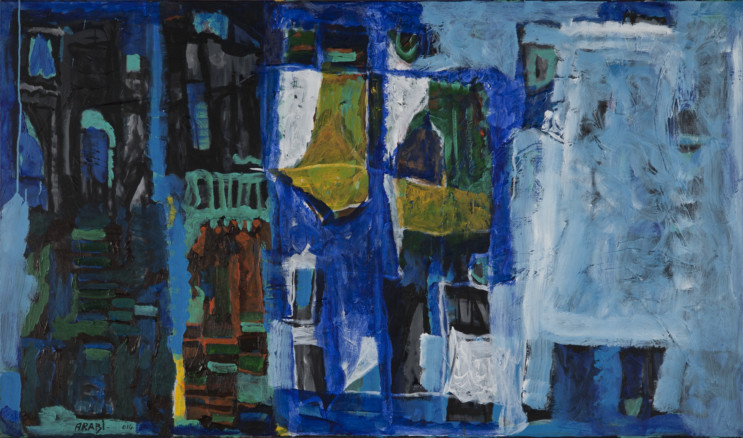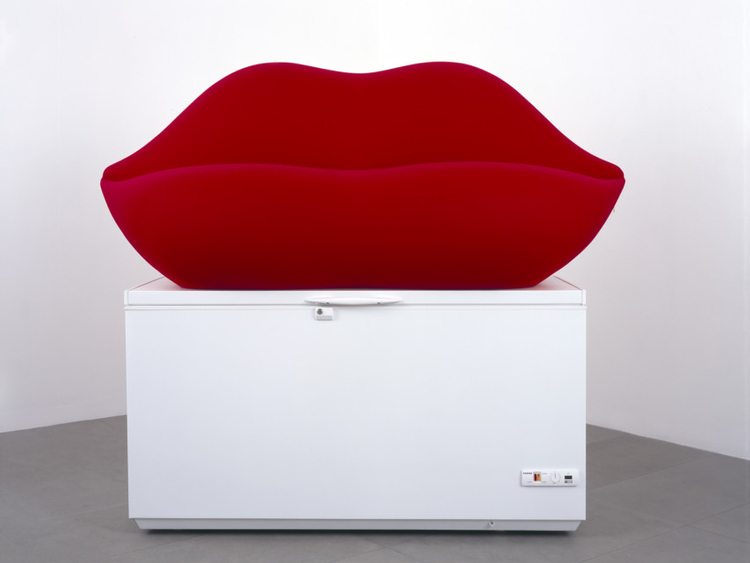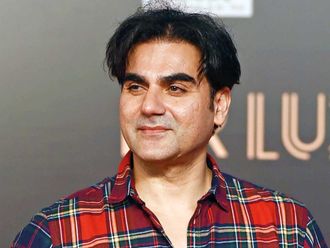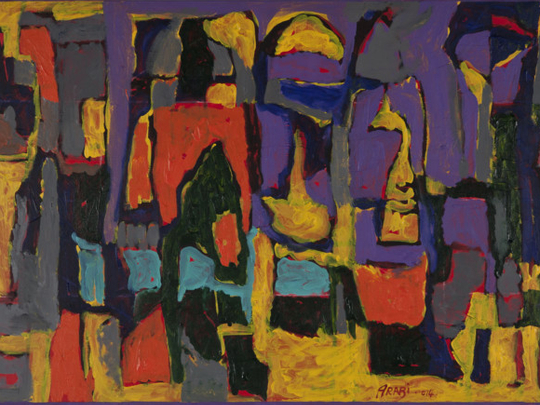
For the last five decades, Asaad Arabi’s work has oscillated between figuration and abstraction. The artist, who is recognised as a pioneer of contemporary Syrian painting, experimented with figurative painting in the 1960s, but later simplified his forms towards geometric abstraction in his paintings of the streets of Damascus.
After moving to Paris in 1975, he once again worked with figuration in his paintings of urban architecture and life. But eventually his interest in exploring the subtle link between urban forms and sound veered him towards lyrical abstraction.
Arabi has studied classical music, and along with urban landscapes, music has been a central theme in his work. During his doctorate studies at the Sorbonne, he spent a decade researching the relationship between music and form, and has written extensively on the subject.
This research has deeply influenced his artistic practice as seen in his recent series of figurative paintings paying tribute to musical legends such as Umm Kalthoum and Maurice Bejart. Music continues to be an important element in his latest show, “Return to Abstraction”. But this new body of work is inspired by the two cities where he grew up — Damascus and Saida, South Lebanon; and Paris, which has been his home for 40 years.
The paintings in this show are reminiscent of his work in the 1970s, with the compositions deconstructed to their simplest forms, blurring the lines between figuration and abstraction. The urban environments can be discerned behind the abstract forms, but what comes through strongly is the musicality of the compositions. Through the carefully constructed flow of lines, shapes and colours, the artist has transformed buildings, streets and architectural details into visual harmonies that beautifully express his emotions about these places.
“I have been fascinated by urban landscapes since childhood. And I love to listen to all kinds of music, be it classical Western music, Sufi chants, or a piece by Indian sitar maestro Ravi Shankar. I have always felt that there is an association between music and form. When I listen to music, I can imagine certain forms taking shape, and when I look at the city, I can feel the musicality in it and can relate the positioning of the buildings and streets to the arrangement of notes in a musical composition,” Arabi says.
“I have tried to find a visual language to express this relationship. These paintings are about three cities that mean a lot to me, but the idea was not to recreate the exact landscape of these places. I used abstraction because I wanted to transcend the physicality and external look of these places, and convey the memories and emotions they evoke in me.”
The titles of the paintings, such as “Melodic Mirroring”, “Night Music in the City”, “Nightly Sonata”, “Architectural Rhythms” and “City of Silence” offer insights into the thoughts, feelings and musical vibrations behind these abstract works. But the artist says that he works intuitively, and the titles come to him only after he sees the finished painting.
His style of working is quite unique. He places the canvas on a table and works all around the flat canvas, adding strokes and shapes from different sides, thus creating a kind of “bird’s eye view” of the landscape.
“I have always worked in this way. But I recently started using another technique, which I have illustrated in the painting ‘The Green Key (Maqam)’ in this series. I covered one portion of the canvas with a cloth, while working on the other portion, and then tried to harmonise the two parts,” Arabi says.
“I always look for new techniques and elements to incorporate in my work, but for me the most important thing while creating a painting is to know when to stop. I do not cover up mistakes because I believe I must stop at the right moment to capture that instant of freshness and mysticism.”
Jyoti Kalsi is an arts enthusiast based in Dubai.
“Return to Abstraction” will run at Ayyam Gallery, DIFC until June 18.
New show at the Fondation Louis Vuitton
The third and last phase of Fondation Louis Vuitton’s inaugural programme of showcasing its permanent art collection is an exhibition of artworks centred on Popist and Music/Sound lines. The “Popist” part of the show looks at the ongoing interest of artists in consumerism related objects and images culled from advertising, television, cinema and the internet. The artists include Jennifer Allora & Guillermo Calzadilla, Jean-Michel Basquiat, Mohamed Bourouissa, Gilbert & George, Andreas Gursky, Bertrand Lavier, Adam McEwen, Michel Majerus, Christian Marclay, Philippe Parreno, Richard Prince, Sturtevant and Andy Warhol.
The ‘music/sound’ inspired works include sculptures, videos and ‘environment installations’ by artists such as Marina Abramovic, Pilar Albarracín, Ziad Antar, Ulla von Brandenburg, John Cage, Rineke Dijkstra, Cyprien Gaillard, Douglas Gordon, Mark Leckey, Philippe Parreno, Jaan Toomik and Hannah Weinberger. A presentation of works by Thomas Schütte and a commissioned work by Cerith Wyn Evans is also part of this third hang. From July 25 onwards, the third hang will be enhanced by the screening of videos based on sources from popular music, to be exhibited in the rooms on the ground floor.
The show “Keys to a Passion” will run at the Fondation in Paris until July 6. It features a large collection of masterpieces of early 20th-century art that have been brought together under one roof in collaboration with leading art institutions from around the globe. For more information and booking tickets, visit www.fondationlouisvuitton.fr.



